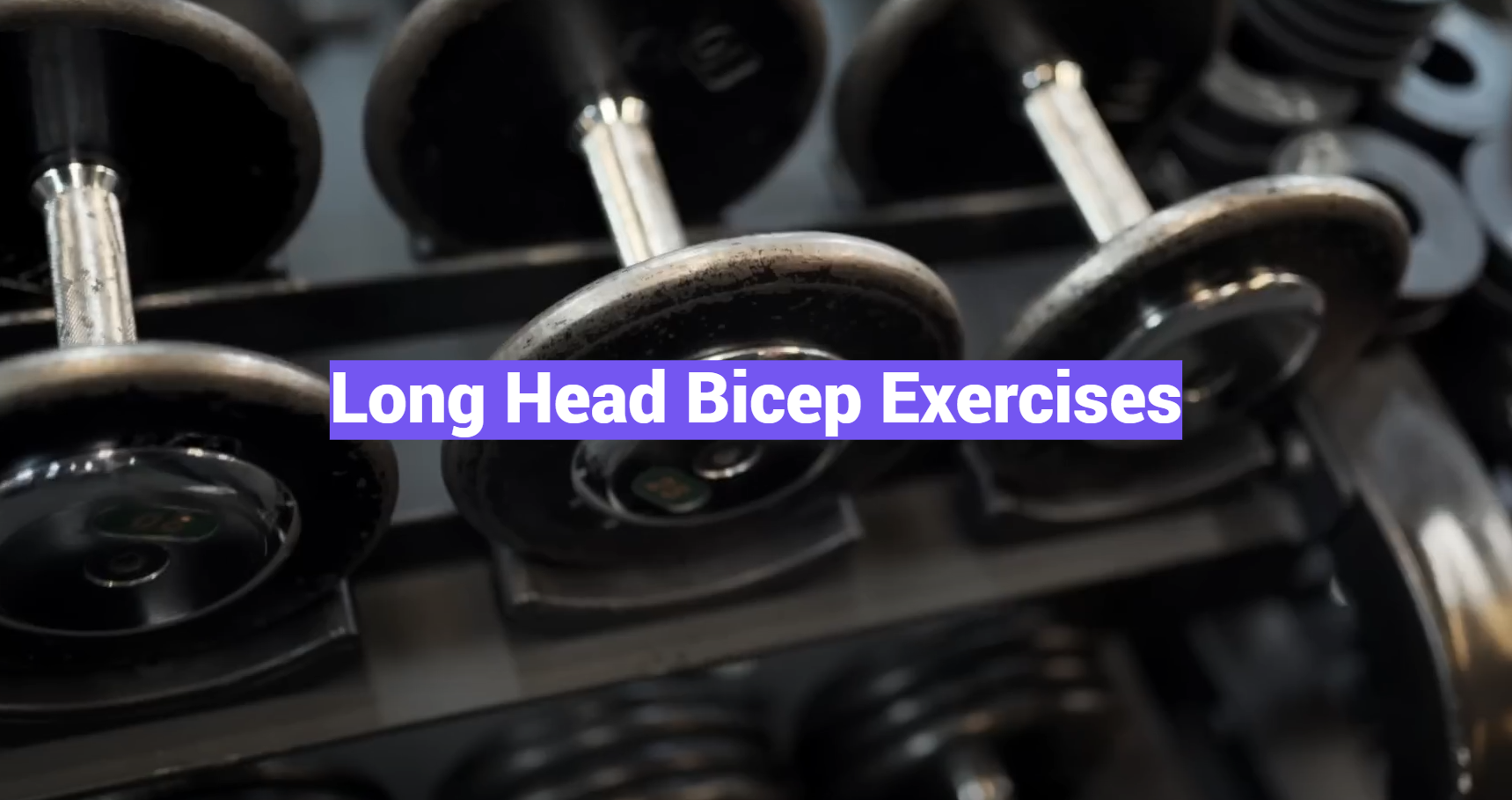The bicep, a prominent muscle in the upper arm, is key to performing a multitude of daily activities with ease and efficiency. One part of this muscle, known as the long head of the bicep, often requires specialized exercises for optimum strengthening and sculpting. The following collection of exercises, tailored to target the long head of the bicep, will guide you towards achieving stronger, more defined arms.
Anatomy of the Biceps
The bicep muscle is located in the front of the upper arm and is responsible for flexing the elbow joint. It is composed of two heads, the long head and short head, which work together to provide strength and stability to the arm.
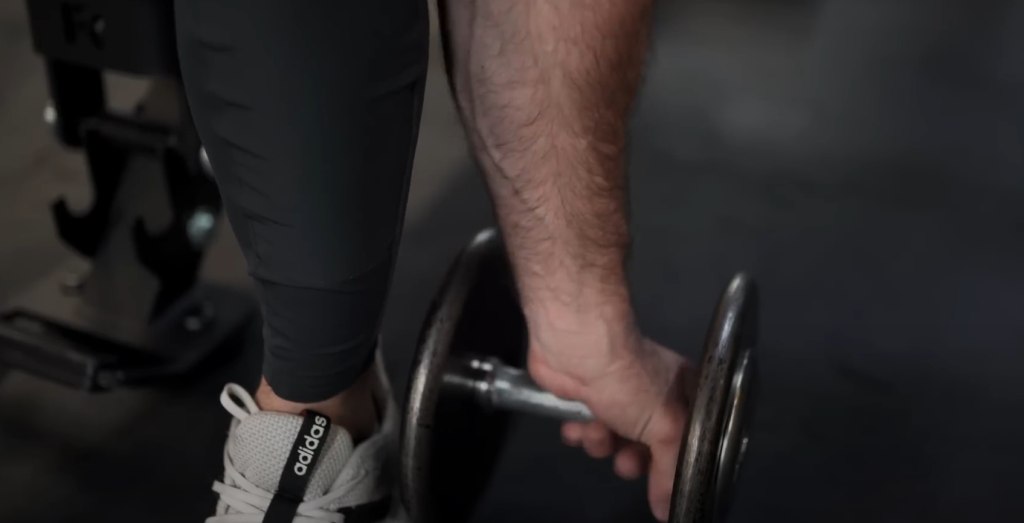
Long Head Bicep Exercises
The long head of the biceps muscle runs from the shoulder blade to the forearm bone and is the larger of the two heads. Strengthening this muscle can help improve overall arm strength and performance, as well as prevent injuries. [1]
Hammer Curls
One effective exercise for targeting the long head bicep is hammer curls. To perform this exercise, stand with your feet shoulder-width apart and hold a dumbbell in each hand with your palms facing inwards. Keeping your elbows close to your sides, curl the weights up towards your shoulders while keeping your palms facing inwards. Pause at the top of the movement and then slowly lower the weights back to the starting position.
Incline Dumbbell Curls
Another great exercise for targeting the long head bicep is incline dumbbell curls. To perform this exercise, sit on an incline bench with a dumbbell in each hand and your arms fully extended towards the floor. Curl the weights up towards your shoulders while keeping your elbows close to your sides. Slowly lower the weights back down to the starting position.
Preacher Curls
Preacher curls are another effective long head bicep exercise that can be done using a preacher bench or an incline bench. To perform this exercise, sit on the bench with your arms fully extended over the edge and a dumbbell in each hand. Curl the weights up towards your shoulders while keeping your elbows close to your sides. Slowly lower the weights back down to the starting position. [2]
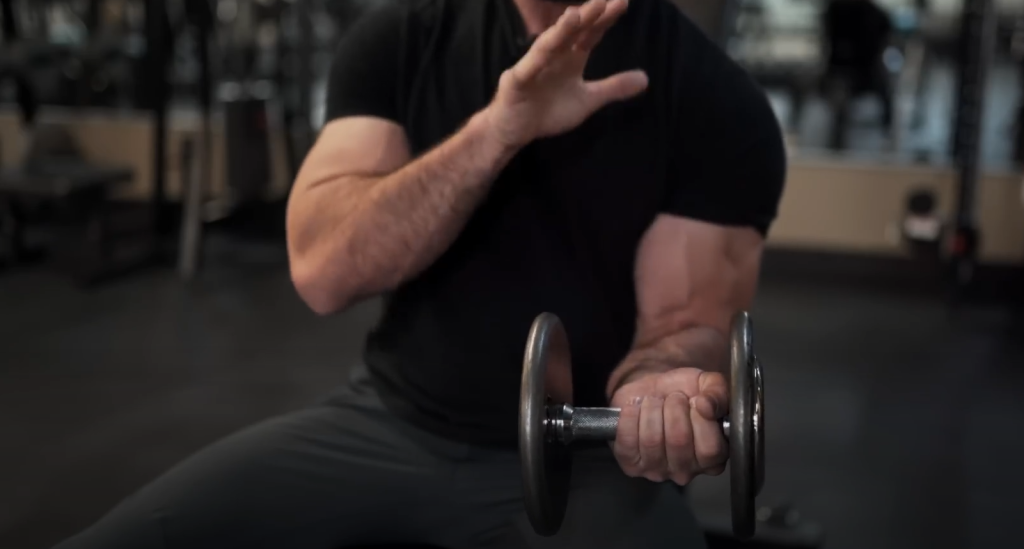
Benefits of Long Head Bicep Exercises
Aside from strengthening and toning the bicep muscle, long head bicep exercises also have a number of other benefits. These include:
- Improved arm strength and stability: The long head bicep is responsible for flexing the elbow joint, so by strengthening it, you can improve overall arm strength and stability.
- Injury prevention: By regularly performing long head bicep exercises, you can help prevent injuries such as strains and tears in the bicep muscle.
- Better sports performance:Many sports require strong arm muscles for throwing, catching, and other movements. By strengthening the long head bicep, you can improve your performance in these activities.
- Aesthetics: Along with improving function and performance, long head bicep exercises can also help give your arms a more toned and defined appearance.
Top 20 Common Long Head Bicep Exercises and How to Perform Them
- Barbell Curls:Stand with your feet shoulder-width apart and hold a barbell with an underhand grip. Curl the weight up towards your shoulders while keeping your elbows close to your sides.
- Cable Curls:Stand in front of a cable machine with a straight bar attached to the low pulley. Hold onto the bar with an underhand grip and curl the weight up towards your shoulders.
- Concentration Curls:Sit on a bench with your legs spread apart and hold a dumbbell in one hand. Place your elbow against the inside of your thigh and curl the weight up towards your shoulder.
- Reverse Grip Curls:Stand with your feet shoulder-width apart and hold a barbell with an overhand grip. Curl the weight up towards your shoulders while keeping your elbows close to your sides.
- Zottman Curls:Stand with your feet shoulder-width apart and hold a pair of dumbbells at your sides with an underhand grip. Curl the weights up towards your shoulders, then rotate your palms to face outwards and lower the weights back down.
- Inverted Rows:Position yourself underneath a Smith Machine or barbell that is set at waist height. Grab onto the bar with an overhand grip and pull your chest towards the bar while keeping your body straight. [3]
- Chin-Ups:Hold onto a chin-up bar with an underhand grip and pull yourself up until your chin is above the bar.
- Reverse Grip Pulldowns:Sit at a lat pulldown machine and grab onto the bar with an underhand grip. Pull the bar down towards your chest, keeping your elbows close to your sides.
- Preacher Hammer Curls:Sit at a preacher bench and hold a dumbbell in each hand with your palms facing inwards. Curl the weights up towards your shoulders, then rotate your palms to face outwards and lower the weights back down.
- Dumbbell Preacher Curls:Sit at a preacher bench with a dumbbell in one hand and your arm extended over the edge. Curl the weight up towards your shoulder while keeping your elbow close to your side.
- Skull Crushers:Lie on a bench with a barbell or EZ bar held straight above your chest. Lower the weight towards your forehead by bending at your elbows, then extend your arms back to the starting position.
- Tricep Pushdowns:Stand in front of a cable machine with an attached rope or V-bar. Keep your elbows close to your sides and push the weight down until your arms are fully extended.
- Dumbbell Tricep Kickbacks:Stand with one foot in front of the other and hold a dumbbell in each hand. Bend at the waist and extend your arms straight back behind you, then return to the starting position.
- Overhead Tricep Extensions:Stand or sit with a dumbbell or cable attachment held above your head with both hands. Lower the weight behind your head by bending at your elbows, then extend your arms back to the starting position.
- Bent-Over Tricep Extensions:Stand with a dumbbell in each hand and bend forward at the waist. Keep your elbows close to your sides as you extend your arms straight back, then return to the starting position. [4]
- Tricep Dips:Sit on a bench or chair with your hands gripping the edge and your feet flat on the ground. Lower yourself until your elbows are at a 90-degree angle, then push yourself back up to the starting position.
- Diamond Push-Ups:Get into a plank position with your hands close together and your index fingers and thumbs forming a diamond. Lower yourself towards the ground by bending at the elbows, then push back up to the starting position.
- Close-Grip Bench Press:Lie on a bench with a barbell or dumbbells held above your chest with an overhand grip. Lower the weight towards your chest by bending at your elbows, then push back up to the starting position.
- Reverse Grip Tricep Pushdowns:Stand in front of a cable machine with your arms overhead and a straight bar attached to the high pulley. Pull the weight down towards your thighs by bending at your elbows, then return to the starting position.
- Single Arm Overhead Extensions:Stand with your feet shoulder-width apart and hold a dumbbell in one hand. Extend your arm straight overhead, then lower the weight behind your head by bending at your elbow. Return to the starting position and repeat on the other side.
With such a variety of long head bicep exercises available, you can easily mix up your workouts to keep things interesting and challenging.
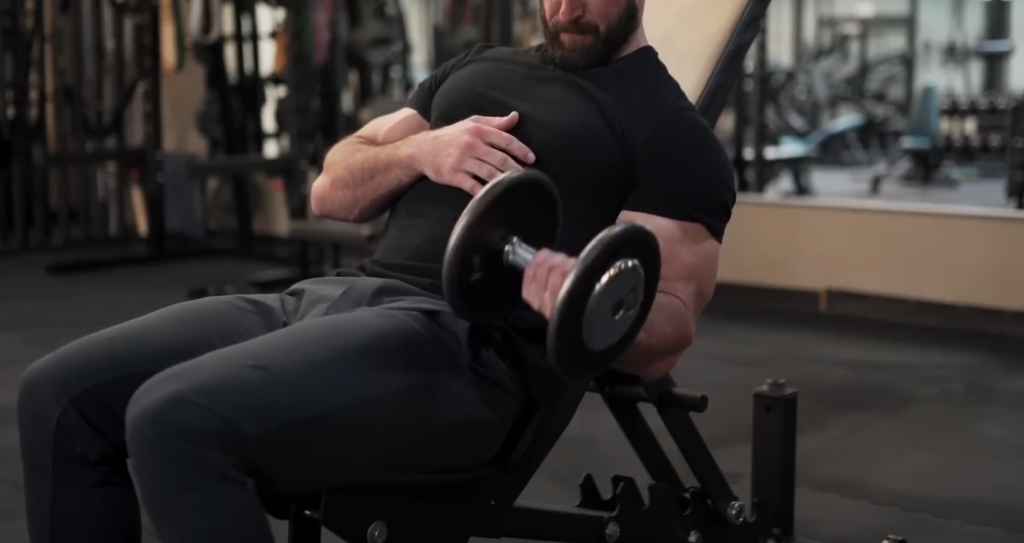
Tips for Performing Long Head Bicep Exercises
- Warm up:It’s important to warm up your muscles before diving into any exercise routine. This can help prevent injuries and prepare your body for the workout ahead.
- Use proper form:Proper form is crucial for getting the most out of your long head bicep exercises and avoiding injury. Be sure to have someone spot you or watch yourself in a mirror to ensure you are performing the exercises correctly.
- Gradually increase weight:As your muscles get stronger, it’s important to gradually increase the weight you are lifting in order to continue seeing progress. This will also help prevent strain or injury.
- Mix up your routine:Don’t stick to the same workout every time – mix things up by incorporating different long head bicep exercises into your routine. This will prevent boredom and challenge your muscles in new ways.
- Rest and recover:Giving your muscles time to rest and recover is just as important as the exercises themselves. Make sure you are getting enough sleep, staying hydrated, and giving yourself breaks between workouts.
- Fuel your body:Eating a balanced and nutritious diet is essential for overall muscle growth and strength. Be sure to fuel your body with protein, healthy fats, and complex carbohydrates. [5]
Safety Precautions
- Consult a healthcare professional:If you have any pre-existing health conditions or injuries, it’s important to consult with a healthcare professional before starting a new exercise routine.
- Start slow and listen to your body:Don’t push yourself too hard too quickly. Start with lighter weights and gradually increase as your muscles get stronger. And always listen to your body – if something feels off or too painful, stop and reassess.
- Don’t sacrifice form for weight:It’s better to lift lighter weights with proper form than heavier weights with poor form. This will not only prevent injury but also ensure that you are targeting the correct muscles.
- Be aware of your surroundings:When using equipment or performing exercises that require movement, be aware of your surroundings to avoid accidents or injury.
- Don’t forget to warm up and cool down: Warming up before a workout and cooling down afterwards is important for preventing injury and aiding in muscle recovery. Don’t skip these important steps.
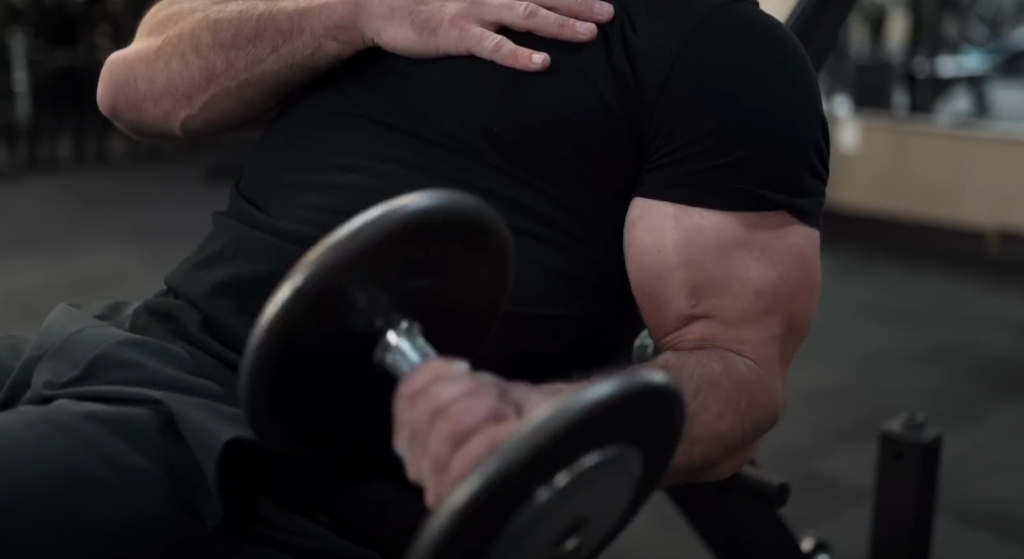
How to Perform Long Head Bicep Exercises Correctly
- Start with a light weight:Begin by using a lighter weight to warm up your muscles and get used to the movement.
- Focus on proper form:As mentioned before, proper form is essential for effective and safe long head bicep exercises. Focus on keeping your elbows close to your sides, engaging your core, and not swinging or using momentum to lift the weight.
- Target specific muscles:For each exercise, focus on targeting the long head of your bicep by keeping your elbows close to your sides and focusing on contracting your tricep muscles.
- Don’t rush:Take your time with each repetition, ensuring that you are using proper form and not rushing through the movement. This will maximize muscle engagement and prevent injury.
- Breathe:Don’t forget to breathe throughout each exercise. Inhale as you lower the weight and exhale as you lift it.
Recommended Reps and Sets
The number of reps and sets you perform will depend on your fitness level and goals. As a general recommendation, aim for 3-4 sets of 8-12 reps for each exercise. This will help build strength and muscle endurance. Remember to increase weight gradually as needed. [6]
Why Is It Important to Train the Long Head Bicep?
The long head of the bicep is an important muscle for overall arm strength and stability. It also plays a key role in shoulder and elbow joints, making it essential for everyday movements such as lifting objects or performing daily tasks. By targeting and strengthening this muscle, you can improve your overall functional strength and prevent injuries. Plus, let’s be honest – who doesn’t want defined and strong biceps?
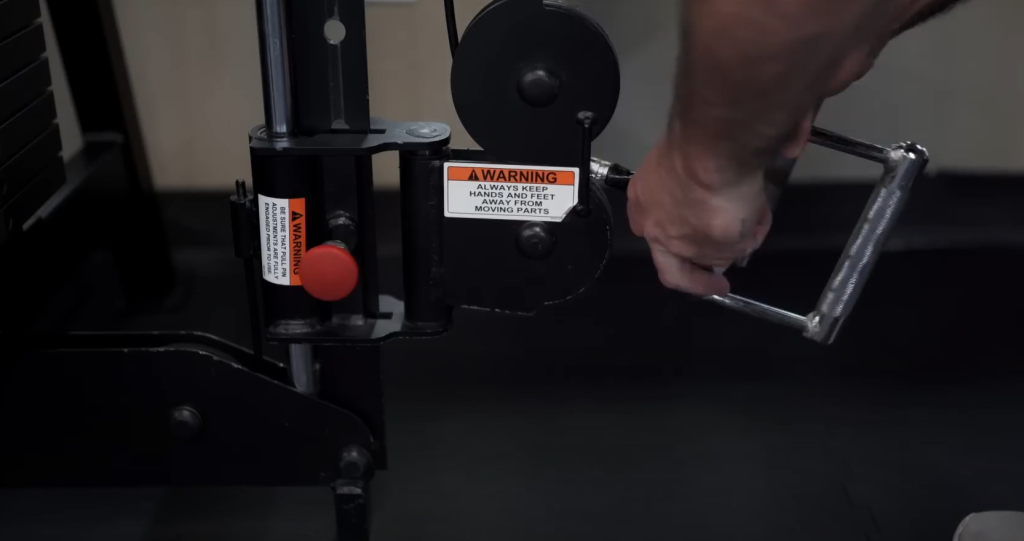
How to Incorporate Long Head Bicep Exercises into Your Workout Routine
To get the most out of your long head bicep exercises, it’s important to incorporate them into a well-rounded workout routine. Here are some tips for incorporating them effectively:
- Schedule specific days:Pick specific days to focus on your arm and bicep muscles, such as Mondays and Thursdays.
- Combine with other muscle groups:You can also incorporate long head bicep exercises into full-body workouts by adding them to days when you are focusing on other muscle groups, such as back or chest.
- Use different equipment:Don’t limit yourself to just using dumbbells – mix things up by incorporating resistance bands, cables, or barbells for added variety and challenge.
- Alternate between compound and isolation exercises: Compound exercises, such as rows or pull-ups, engage multiple muscle groups including the long head of your bicep. Isolation exercises, such as curls, specifically target the long head of your bicep. Alternate between these types of exercises for a well-rounded workout.
The Importance of Nutrition in Building Strong Biceps
The biceps are one of the most visible and revered muscle groups in the body. They are often seen as a symbol of strength, power, and masculinity. As such, many individuals strive to develop strong and well-defined biceps through various forms of exercise.
While proper training is crucial for building strong biceps, nutrition also plays a vital role in achieving this goal. In fact, without proper nutrition, it can be challenging to see significant results from your bicep training efforts.
In this section, we will discuss the role of nutrition in building strong biceps and provide some tips on how to optimize your diet for maximum muscle growth.
Macros: The Building Blocks of Muscle
Macronutrients, or “macros” for short, are the three main sources of energy for the body: protein, carbohydrates, and fat. Each macronutrient plays a crucial role in muscle development.
Protein is essential for building and repairing muscle tissue. When you engage in resistance training, small tears occur in your muscles, and protein helps to repair these tears, making your muscles bigger and stronger.
Carbohydrates provide the body with energy, which is vital for intense weightlifting sessions. They also help replenish your glycogen stores, which are depleted during exercise.
While many fear fat and try to avoid it in their diets, healthy fats play a crucial role in hormone production, including testosterone, which is essential for building muscle. [7]

The Importance of Calories
To build strong biceps, you need to be in a calorie surplus, meaning that you are consuming more calories than you are burning. This is because building muscle requires energy, and if you are not providing your body with enough calories, it will not have the fuel it needs to grow.
However, it is important to note that being in a calorie surplus does not mean eating anything and everything without regard for nutrition. Your calorie surplus should consist of nutrient-dense foods that will fuel your workouts and support muscle growth.
Nutrient Timing
In addition to overall calorie consumption, the timing of your meals can also play a role in building strong biceps. Consuming protein and carbohydrates before and after your workouts can help provide your muscles with the necessary nutrients for growth and recovery.
Eating a protein-rich meal before your workout can help increase muscle protein synthesis, the process by which muscles repair and grow. Consuming carbohydrates after your workout can replenish glycogen stores and help with muscle recovery.
Hydration
Hydration is often overlooked but is crucial for building strong biceps. Water makes up a significant portion of our muscles, and being dehydrated can affect muscle performance and growth. Make sure to drink plenty of water throughout the day, especially during and after your workouts.
The Role of Supplements
While proper nutrition should always come from whole foods, some supplements may be beneficial in supporting bicep muscle growth. Protein powder, creatine, and branched-chain amino acids (BCAAs) are some popular options that can help with muscle recovery and growth.
However, it is essential to remember that supplements should be used in conjunction with a nutritious diet, not as a replacement for it.
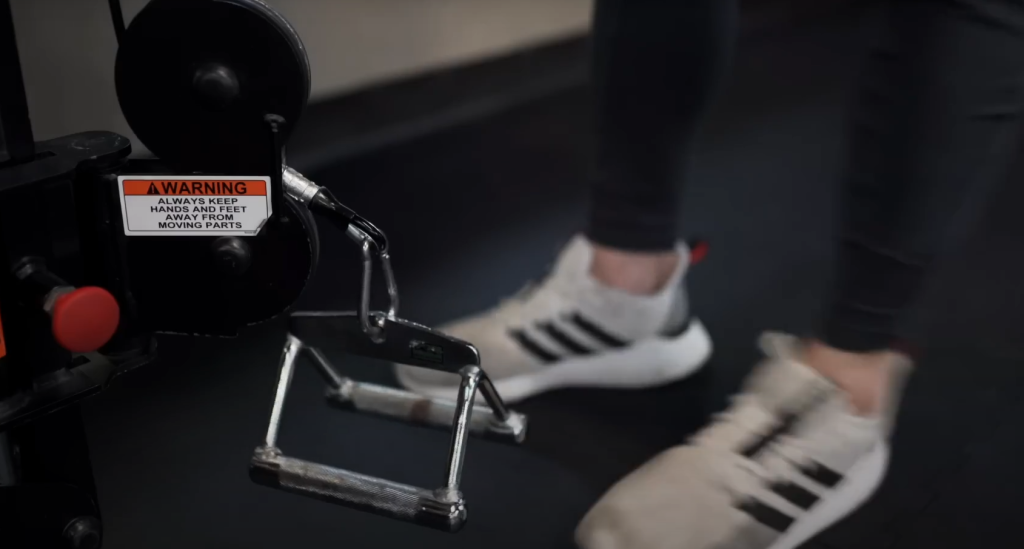
FAQs
What are some effective long head bicep exercises?
Some effective exercises for targeting the long head of the biceps include incline dumbbell curls, spider curls, and hammer curls.
Can I build strong biceps without proper nutrition?
While it is possible to see some progress in your bicep development without proper nutrition, achieving significant results will be difficult without a balanced and nutrient-dense diet. Nutrition plays a crucial role in muscle growth and should not be overlooked.
How much protein do I need to build strong biceps?
The amount of protein needed for muscle growth varies depending on individual factors such as age, weight, and activity level. Generally, it is recommended to consume 0.8-1 gram of protein per pound of bodyweight to support muscle development.
How do I know if I am in a calorie surplus?
Tracking your food intake and monitoring changes in weight and muscle development can help you determine if you are in a calorie surplus. It is essential to listen to your body and adjust your diet accordingly to support muscle growth.
What is the correct form for performing these exercises?
Proper form is crucial for targeting the biceps effectively and avoiding injury. It is recommended to seek guidance from a trained fitness professional or watch instructional videos before attempting these exercises. Remember to always start with lighter weights and gradually increase as you become more comfortable with the movements.
How often should I perform these exercises for optimal results?
Consistency is key when it comes to seeing results in your bicep development. It is recommended to perform these exercises 2-3 times a week, allowing for rest and recovery days in between. Additionally, make sure to vary your workouts and incorporate different exercises to challenge your muscles and prevent plateauing.
Can I perform these exercises at home without gym equipment?
While some of these exercises may require gym equipment, there are also variations that can be done at home with minimal or no equipment. Resistance bands, dumbbells, and even household items like water bottles or cans can be used for resistance training. Make sure to research proper form and modifications before attempting any exercise at home.
What are the benefits of focusing on the long head of the bicep?
The long head of the bicep is responsible for creating the peak appearance of the bicep, giving it a more defined and aesthetic look. It also contributes to overall arm strength and can help improve performance in other upper body exercises such as pull-ups and rows.
Is there a specific order I should perform these exercises in?
While there is no set rule for the order of exercises, it is generally recommended to start with heavier compound movements and finish with isolation exercises. This approach allows you to target the muscle group effectively while also preventing injury.
How long will it take to see results in my bicep development?
The rate at which individuals see results can vary depending on various factors such as genetics, body composition, and consistency in training and nutrition. It is important to focus on progress rather than perfection and trust the process. With dedication and patience, you will see results over time.
Are there any safety precautions I should be aware of when performing these exercises?
Always warm up before starting your workout and listen to your body. If you experience any pain or discomfort, stop immediately and seek guidance from a medical professional or trained fitness instructor. Proper form is crucial for preventing injury, so make sure to focus on technique rather than lifting heavy weights. Lastly, do not forget to stretch after your workouts to help with muscle recovery and prevent stiffness.
Can these exercises be performed by beginners or are they more suitable for advanced trainers?
These exercises can be performed by individuals of all fitness levels. However, it is essential to start with lighter weights and focus on proper form before gradually increasing the weight. If you are new to strength training, seeking guidance from a trained professional can help prevent injury and ensure proper technique. As always, listen to your body and adjust accordingly.
Is it necessary to incorporate other exercises besides those targeting the long head of the bicep?
While it is essential to focus on exercises that target the long head of the bicep, incorporating other upper body and core exercises can also support overall muscle development. It is important to have a well-rounded workout routine that targets various muscle groups for balanced strength and aesthetics.
Conclusion
In conclusion, we have discussed the importance of incorporating long head bicep exercises into your workout routine. These exercises not only target a specific muscle group but also have numerous benefits for overall strength and functionality.
By regularly performing long head bicep exercises, you can improve your arm aesthetics, increase your upper body strength, and prevent injuries. Additionally, these exercises can also help improve your overall posture and enhance your athletic performance in other activities.
While there are many different exercises that target the long head bicep, it is important to choose ones that are suitable for your fitness level and goals. It is also crucial to maintain proper form and technique while performing these exercises to avoid any potential injuries.
Incorporating a variety of long head bicep exercises into your workout routine can also prevent boredom and keep your workouts challenging. Remember to always warm up properly before starting any exercise and to listen to your body, adjusting the intensity or frequency of the exercises as needed.
We hope this guide has provided you with valuable information on long head bicep exercises and the benefits they offer. So next time you hit the gym, don’t forget to give your long head bicep some love and add these exercises into your routine for stronger and more defined arms. Stay consistent, stay dedicated, and you will see the results in no time! Keep up the hard work and keep flexing those long head biceps with confidence.
Useful Video: The Best And Worst Biceps Exercises
References:
- https://boxlifemagazine.com/long-head-bicep-exercises/
- https://www.setforset.com/blogs/news/long-head-bicep-exercises
- https://barbend.com/long-head-biceps-exercises/
- https://www.inspireusafoundation.org/long-head-bicep-exercises/
- https://stretch.com/blog/long-head-bicep-exercises/
- https://builtwithscience.com/workouts/long-head-biceps-exercises/
- https://xtraprotein.com/2023/03/27/get-bigger-arms-with-proper-training-and-nutrition/

